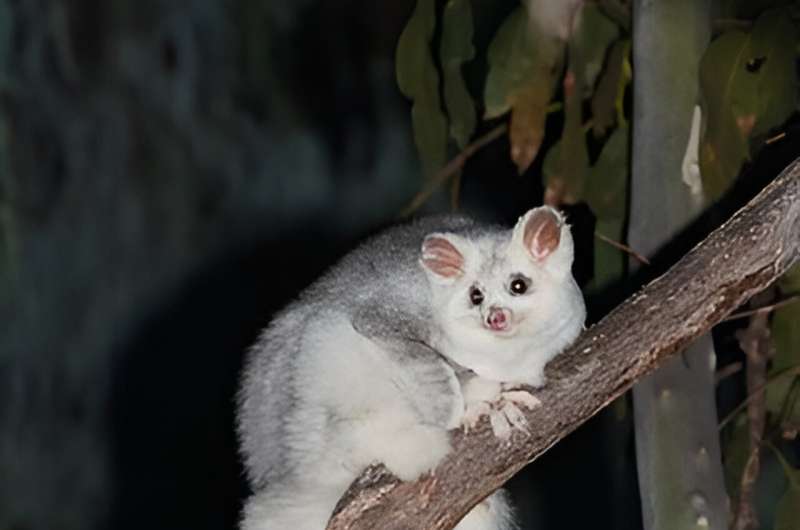This article has been reviewed according to Science X's editorial process and policies. Editors have highlighted the following attributes while ensuring the content's credibility:
fact-checked
trusted source
proofread
Majority of endangered greater glider habitat in Queensland unprotected, shows study

Researchers at Griffith University have discovered that the majority of critical habitat and movement pathways for southern greater gliders in Queensland lie outside of protected areas.
Dr. Patrick Norman and Professor Brendan Mackey used innovative technology to map mature forests to identify potential habitat and corridors that were essential for the survival of the endangered species. It is only these 200+-year-old forests in which tree hollows large enough to support the cat-sized gliders occurred.
Worryingly, the researchers discovered that most of the important remaining glider habitat in the state occurred within privately owned, lease owned land and state forest, leaving it vulnerable to logging, clearing and other threats. The research paper, "Priority areas for conserving greater gliders in Queensland, Australia," has been published in Pacific Conservation Biology.
The marsupials, whose specialist diet consists almost exclusively of young eucalypt leaves, use between 4 and18 nesting hollows in their home range. Many of these vital hollow-bearing trees were lost during the Black Summer bushfires making those that remain even more essential.
The same issue applied when the researchers explored areas that served as important habitat corridors enabling greater gliders to move between forest patches.
"We identified 88 critical movement pathways for greater gliders in Queensland, most of which we found were outside of existing conservation areas," said Norman, a researcher at Griffith University's Climate Action Beacon.
"We also noted that there were a few missing links where targeted restoration of forests to create wildlife corridors would have a particularly positive impact for greater gliders."
If patches of forest were not well connected, greater gliders were forced to move along the ground, putting them at risk of being preyed upon or injured.
"The findings will be valuable for helping inform conservation efforts to support Queensland's greater gliders and prioritize important areas of habitat for protection," Norman said.
"We are working to secure the funding needed to replicate this study in other states, but also to map the important habitat and corridors for animals with different movement needs, such as spotted-tailed quolls," said Gary Howling, CEO of Great Eastern Ranges.
"Trying to conserve our wildlife in isolated protected areas is not sufficient by itself to ensure their long-term survival, particularly in the face of climate change.
"We also need to be restoring and protecting habitat between those protected areas so that animals have the room they need to move and adapt to changing conditions and food supplies."
More information: Patrick Norman et al, Priority areas for conserving greater gliders in Queensland, Australia, Pacific Conservation Biology (2023). DOI: 10.1071/PC23018
Provided by Griffith University




















